It sits on swampy land, the Java Sea lapping against it, and 13 rivers running through it. So it shouldn't be a surprise that flooding is frequent in Jakarta and, according to experts, it is getting worse. But it's not just about freak floods, this massive city is literally disappearing into the ground.

Image captionNorth Jakarta is sinking by about 25cm every year
"The potential for Jakarta to be submerged isn't a laughing matter," says Heri Andreas, who has studied Jakarta's land subsidence for the past 20 years at the Bandung Institute of Technology.
"If we look at our models, by 2050 about 95% of North Jakarta will be submerged."
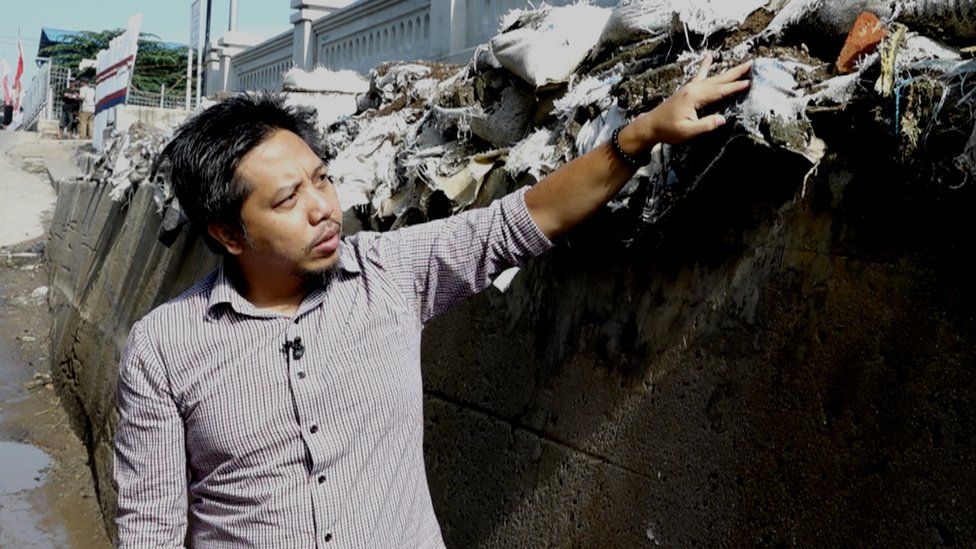
Image captionHeri Andreas points at a dyke built to prevent sea water from flooding houses when it rains
It's already happening – North Jakarta has sunk 2.5m in 10 years and is continuing to sink by as much as 25cm a year in some parts, which is more than double the global average for coastal megacities.
Jakarta is sinking by an average of 1-15cm a year and almost half the city now sits below sea level.
The impact is immediately apparent in North Jakarta.
In the district of Muara Baru, an entire office building lies abandoned. It once housed a fishing company but the first-floor veranda is the only functional part left.
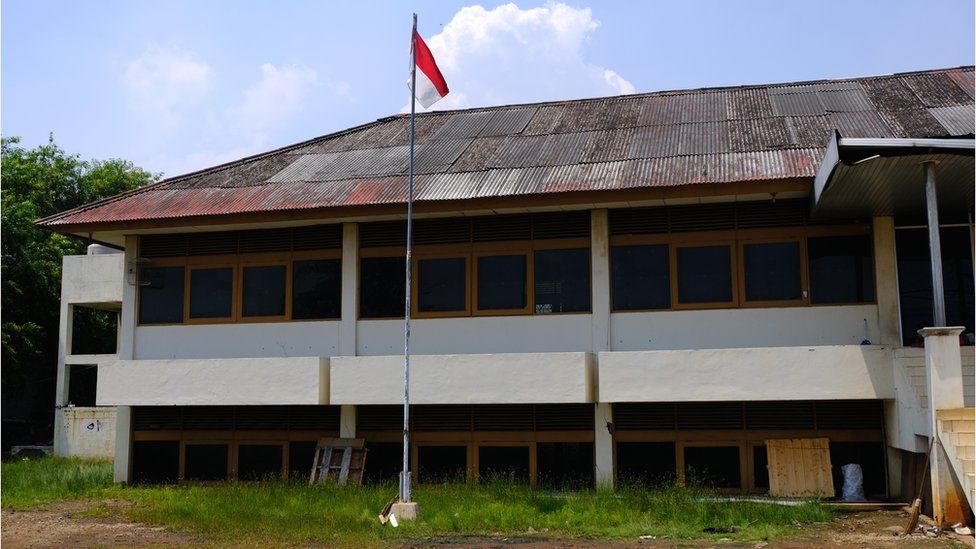
Image captionThe ground floor of this abandoned office building is now underground
The submerged ground floor is full of stagnant floodwater. The land around it is higher so the water has nowhere to go. Buildings that are so deeply sunk are rarely abandoned like this, because most of the time the owners will try to fix, rebuild and find short-term remedies for the issue. But what they can't do is stop the soil sucking this part of the city down.
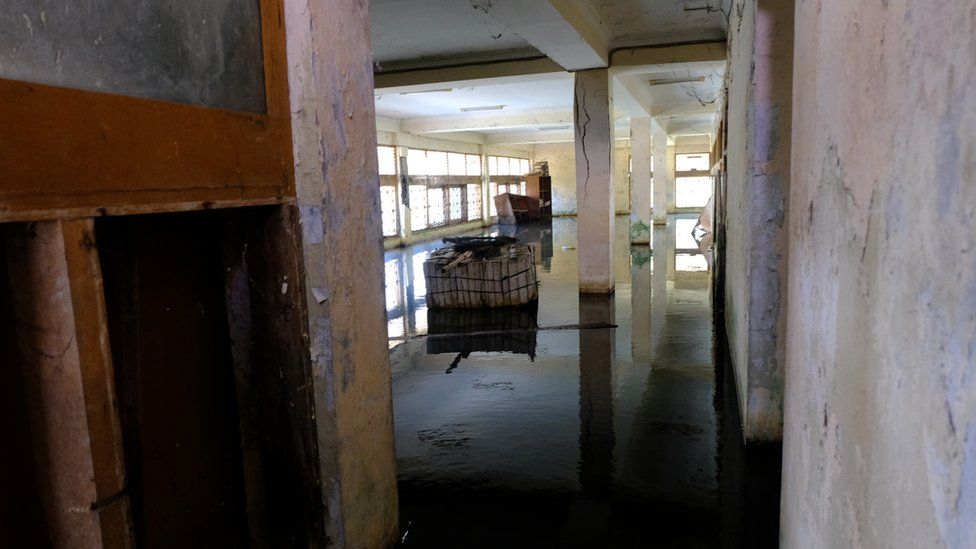
Image captionStagnant water on the ground floor
An open air fish market is just a five-minute drive away.
"The walkways are like waves, curving up and down, people can trip and fall," says Ridwan, a Muara Baru resident who often visits the fish market. As the water levels underground are being depleted, the very ground market-goers walk on is sinking and shifting, creating an uneven and unstable surface.
"Year after year, the ground has just kept sinking," he said, just one of many inhabitants of this quarter alarmed at what is happening to the neighbourhood.
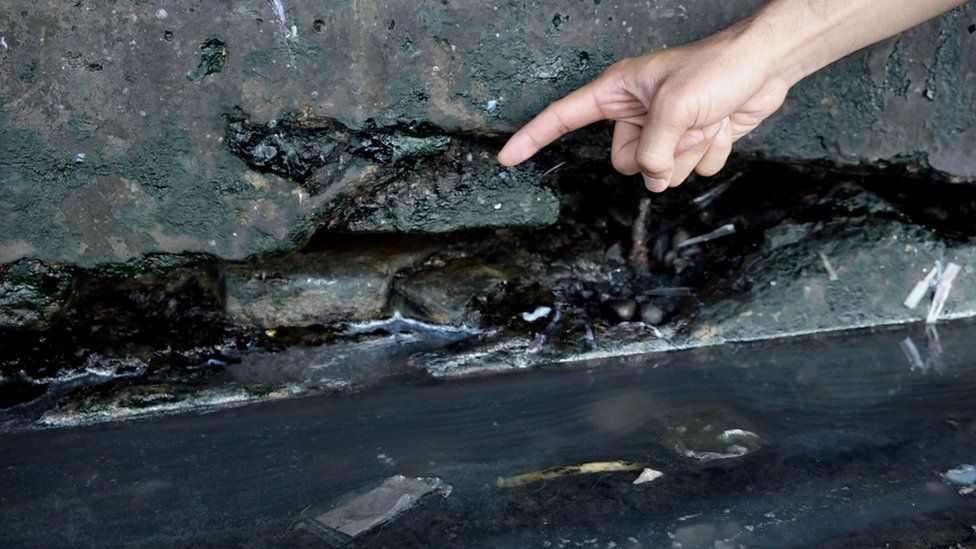
Image captionA large crack in the foundation of a fish market that has seen severe land subsidence
North Jakarta has historically been a port city and even today it houses one of Indonesia's busiest sea ports, Tanjung Priok. Its strategic location where the Ciliwung river flows into the Java Sea was one of the reasons why Dutch colonists chose to make it their bustling hub in the 17th Century.
Today 1.8 million people live in the municipality, a curious mixture of fading port businesses, poor coastal communities and a substantial population of wealthy Chinese Indonesians.
Fortuna Sophia lives in a luxurious villa with a sea view. The sinking of her home is not immediately visible but she says cracks appear in the walls and pillars every six months.
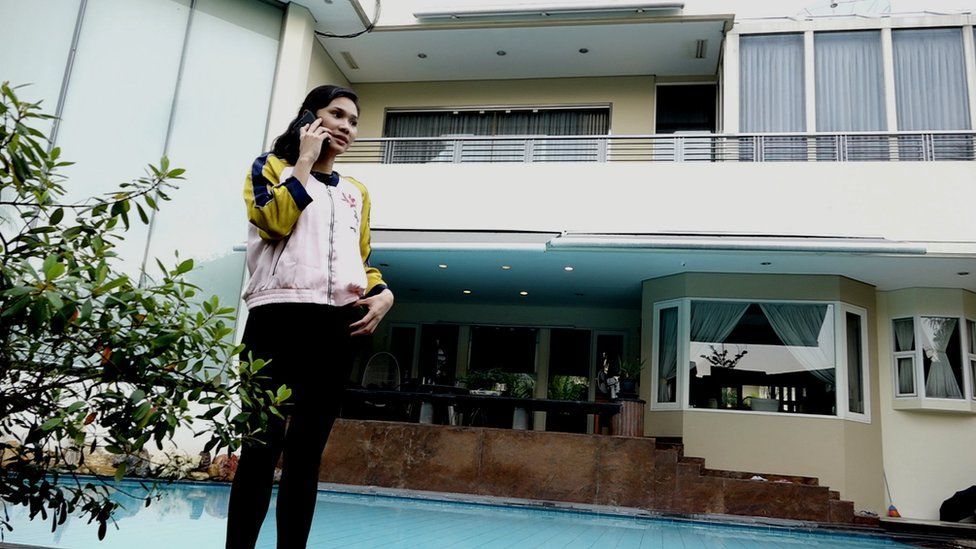
Image captionFortuna says that when it rains, flood waters can submerge the pool
"We just have to keep fixing it," she says, standing beside her swimming pool with her private dock just a few metres away. "The maintenance men say the cracks are caused by the shifting of the ground."
She's lived here for four years but it has already flooded several times: "The seawater flows in and covers the swimming pool entirely. We have to move all our furniture up to the first floor."But the impact on the small homes right by the sea is magnified. Residents who once had a sea view now see only a dull grey dyke, built and rebuilt in a valiant attempt to keep seawater out.
"Every year the tide gets about 5cm higher," Mahardi, a fisherman, said.
None of this has deterred the property developers. More and more luxury apartments dot the North Jakarta skyline regardless of the risks. The head of the advisory council for Indonesia's Association of Housing Development, Eddy Ganefo, says he has urged the government to halt further development here. But, he says, "so long as we can sell apartments, development will continue".
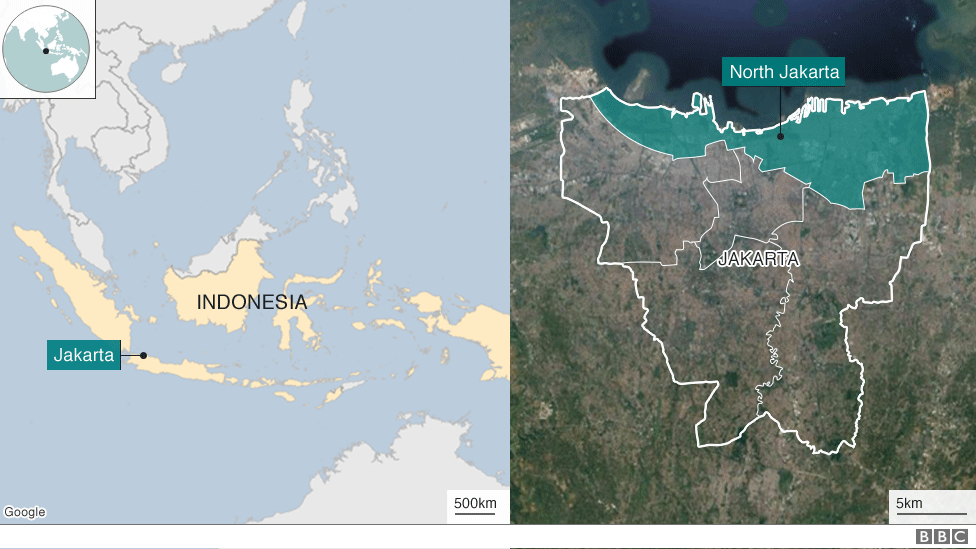
The rest of Jakarta is also sinking, albeit at a slower rate. In West Jakarta, the ground is sinking by as much as 15cm annually, by 10cm annually in the east, 2cm in Central Jakarta and just 1cm in South Jakarta.
Coastal cities across the world are affected because of rising sea levels caused by climate change. Increased sea levels occur because of thermal expansion – the water expanding because of extra heat – and the melting of polar ice. The speed at which Jakarta is sinking is alarming experts.
It may seem surprising but there are few complaints from Jakartans because for residents here the subsidence is just one among a myriad of infrastructure challenges they have to deal with daily.
According to bbc











